LOTTE ANDERSEN
Lima is the bravest decision I ever made. Not in the sense that bravery, has so often been typified as simply moving halfway across the world, but more in the line of discipline. The decision was made to catalyse a profoundly personal act and the burden of casual coffees on the Kingsland road. Once again I must add, I was not on a mission to find myself, or demystify some type of truth pertaining to the human condition on the Inca trail. In simple terms something private. And pure pleasure.

Notebook 2019
This past week I was archiving the work I made for MAXILLA ; in absolutely no hurry. These prints and posters live on multiple hard drives in the back of my studio. There is a strained sense of nostalgia when looking at this phase of my life, which I have avoided, enjoying to focus much attention on the social element of these parties, intentionally overlooking the glaring self-portrait which emerges from the prints made. These years of meticulously archived print works, all in chronological order, suggest what eventually crystallized as the reality of the social situation in Britain, or home, is all the more visible. These were the years leading up to Brexit an the US democratic party’s choice to vote in Trump as their leader. These murky years just after MAXILLA , as revelatory as they were disgusting, it now seems an urgent task was laid bare.

Meme 2016, Screenshot. Lotte Andersen
Leaving London in mid 2019 was the swing for me. At the time I was prepping for a show in Seoul which was simultaneously exciting and terrifying. I had been invited to Lima for a trip in March… the city hit me at a million miles an hour blowing out the cobwebs.. We often talk about privilege in first world terms, neglecting to factor in all that we do in fact have access to in capitals like London, Paris, New York, Madrid. Lima sorts this out quickly, caring little for the speed at which it filters out your bullshit. And what a lot of bullshit.

Notebook, London 2013
As a city, it sits on a clifftop extending inland to large mountains of rock, situated in the middle of a desert, it’s chaotic centre further toward the north. To describe the mishmash of this Latin American city is hard in English, without the dust and traffic in front you. Maybe things are better in brief terms, rawer or less spoilt.

Maxilla Screenshot Facebook 2013
Living here in the middle of a pandemic is certainly an eye opening experience. Eight months of a curfew here, whilst reading headlines of citizens in the US and UK protesting their human right to abstain from mask wearing. It’s hard not to giggle sardonically at Boris and his cabinet of twits. In Lima danger and the sense of segregation are real, unglamorous and leave little to the imagination. I am sure things, or I would have stayed if I had stayed at in London.
March 2019, I was plopped in the middle of all this life, with all this admin to do. The landscape in Peru is Big Nature, with the closest comparison being Califormia, sitting on the same coast if you sailed due South. Here I have been thinking, sitting, and re-sitting with things.
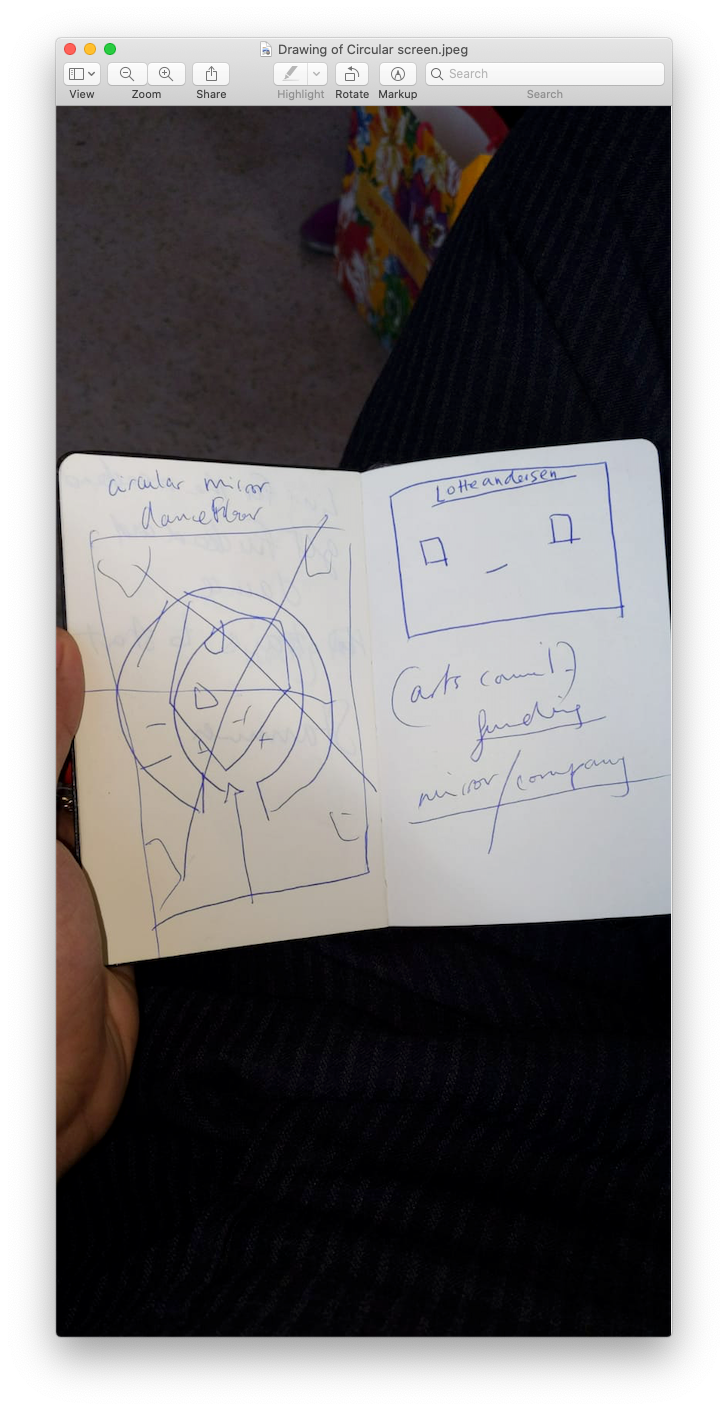
Drawing of circular screen January 2018
“Music’s most natural habitat is the dark” Jarvis Cocker asserted in 1996 at a festival somewhere in Europe. He was describing playing to an audience in broad daylight. The space between him and the crowd became all too clear in the harsh light of day, allowing him to notice the cosmic synergy darkness has with pleasure. “Most of life’s most pleasurable activities take place in the dark”, the words still rang in my ears years after I sampled them for the original Dance Therapy soundtrack in 2017. I think about environments and the etiquette required by these and vice versa. “The dark allows you to get away with a lot more things”, Cocker rounds off, as if to put a cap on the conversation with all the ambiguity and cocksure readi-ness of the public school boys he often describes in his music.
Just before writing this, we had been sitting in Alons’ studio talking about shadows. We agreed his paintings were impressions of shadows, and that the first examples of figuration was the human shadow on the floor or a wall by fire light. I wondered about how these moving figures preceded the invention of moving image and photography. These in between fragments below are images, notes and drawings of installations, performances and shows which reminded me of the shaddow conversation. They are notes and thoughts, in between moments which are quite rarely seen. I like the in between part, it’s a bit like when you’ve chewed gum too much and the flavours gone but the memory remains in it’s all of it’s elastic texture.
Just as the pieces of conversation we had in the studio, some things are best left a bit open.

Installing Dance Therapy in Seoul 2019
I have found that scale is increasingly a pertinent issue, tricky to manage, since we are all in agreement that the world is ending. I find the idea that we live in a moment which is already so cluttered with a glut of unnecessary eventualities quite perplexing. And maybe that’s it.
Scale and support matter. When we resolve to look back at the history of art, Alons and I agreed that the folklore of humanity is canonized here. Perhaps moving image is the most generous of these conclusions. I thought long about the shadows in my work, the figures in full HD, gyrating, experiencing each other and their surroundings, all potentially immortal. When working on the audio to accompany the installation of Dance Therapy in Korea, Pierre and I discussed what nostalgia for the present could sound like. I am not a painter and just like I can remember Faye saying years ago, “Lotte you are! The screen is your support” and maybe the edit is the brush. Who knows.
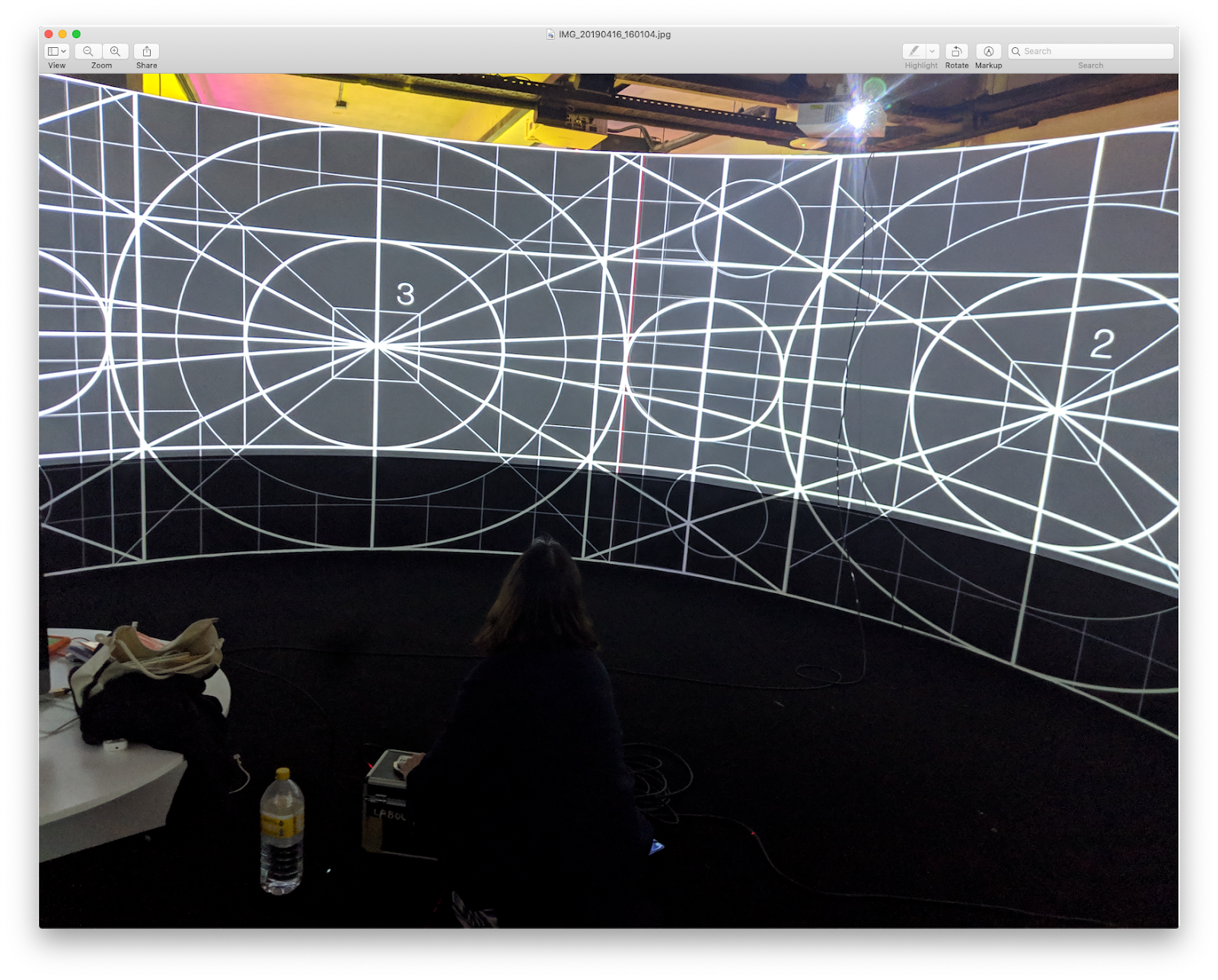
Installing Pierre Rousseau’s audio in front of the curve screen for Dance Therapy in Seoul 2019.

Installing Dance Therapy in Seoul 2019
The value of participation, thinking of our presence, relative to our own importance, within all its revelatory nature never ceases to amaze me. Musicians often talk about audiences momentarily giving themselves over during a performance. I wonder sometimes, whether our survival as a species is contingent on the encouragement of empathy through experience. In short, are we capable of developing this crucial sentiment, without our communal participation in any/all manner of charades we seek to judge?
My players, sitters, subjects are free to move in and out of the frame or game as they see fit. Pronouncing sovereignty and control over these groups has always seemed absurd, and entirely outside of my investigation. I produce factual data in the context of artificial environments, observing human behaviour. The performances and films are documents of the suspension and regulation of time and space, whilst implementing a finite set of principles of conduct, set up to record the predictability or unpredictability of reaction.
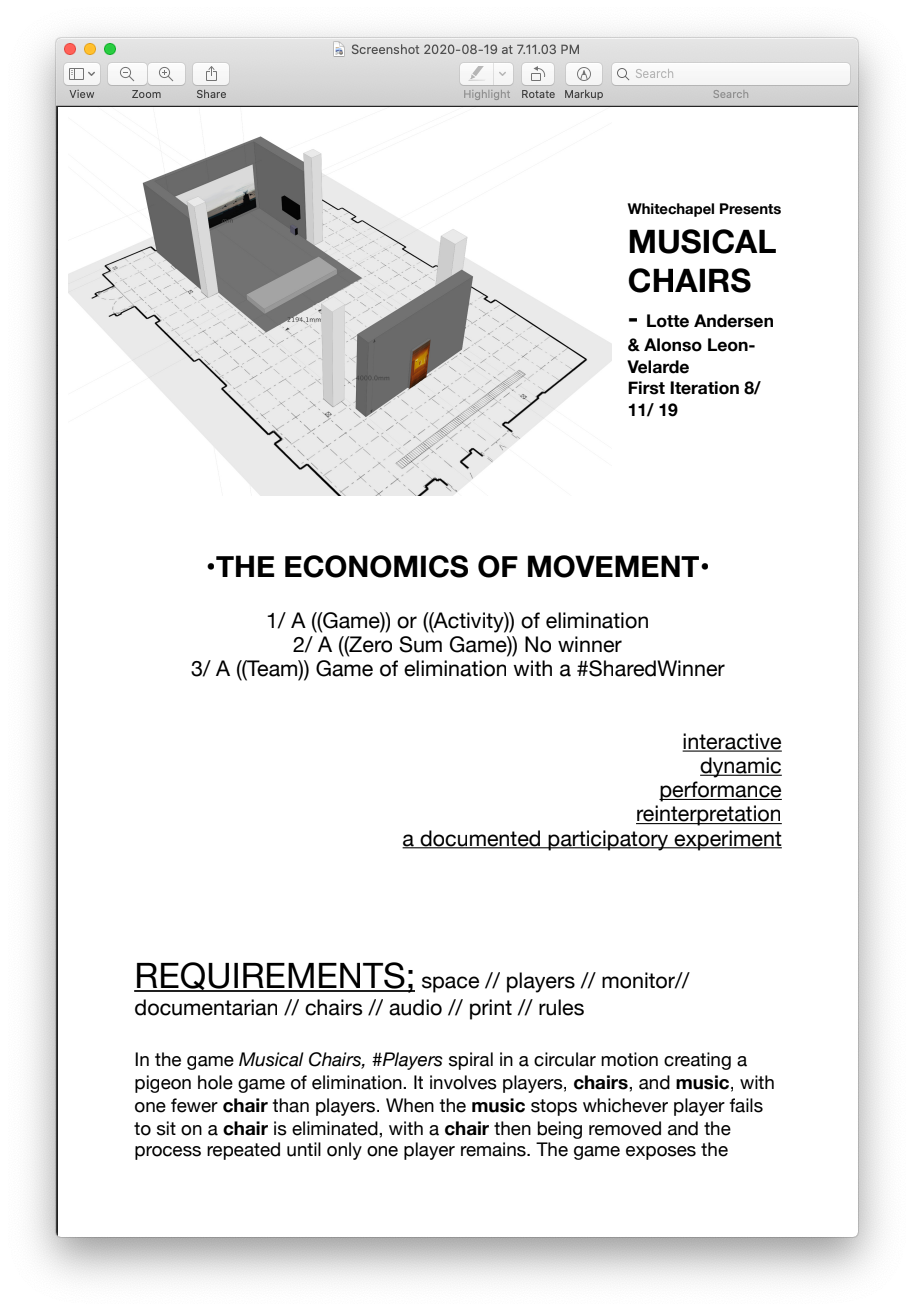
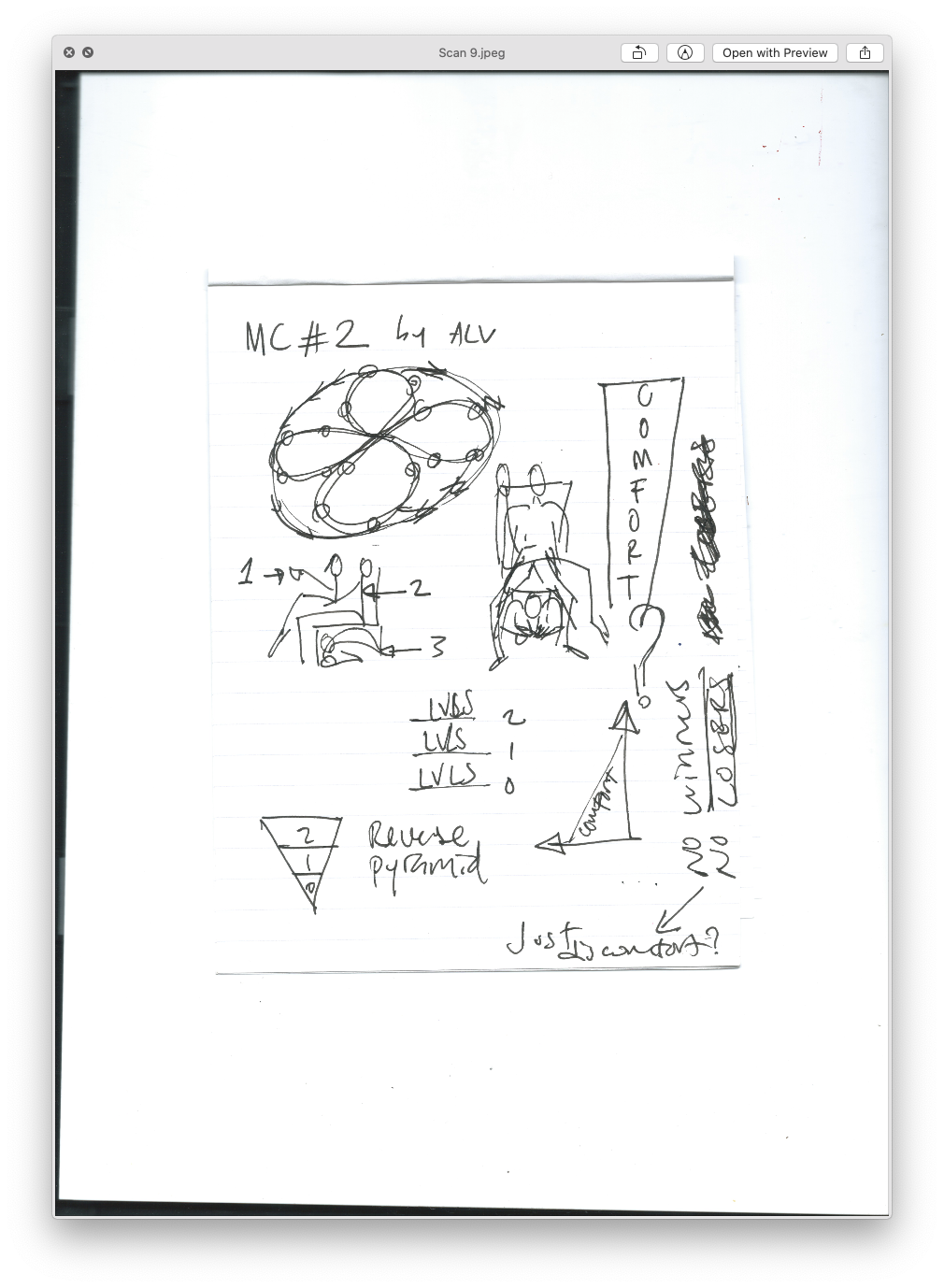
Left to right; Extract of The Economics of Movement PDF, November 2019. Drawing, The Economics of Movement 2019. Lotte Andersen and Alonso Leon-Velarde. Played in it’s first iteration at the Whitechapel Gallery
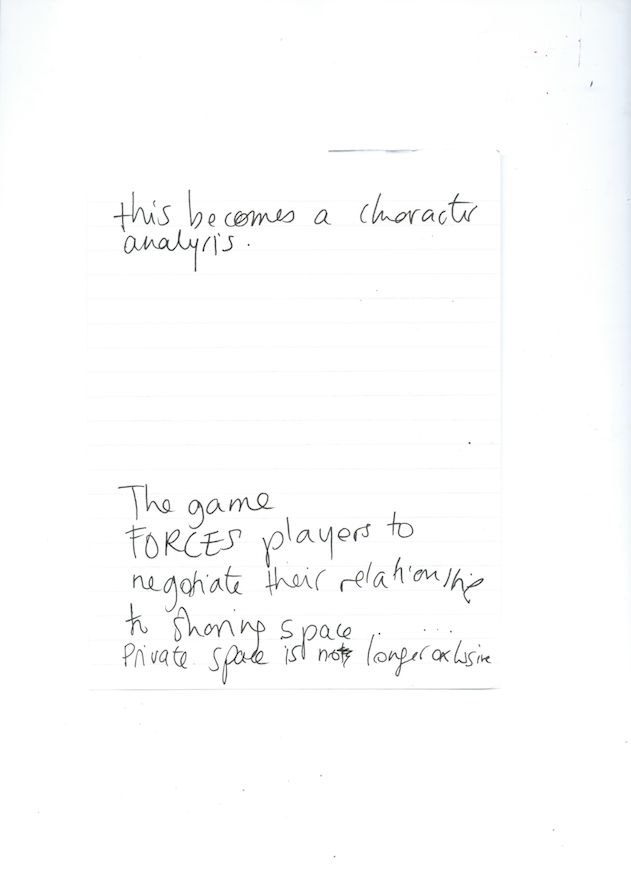
The Economics of Movement Notes November 2019
—
Lotte Andersen is a British artist working in video, sound, print, performance, writing and collage. Examining movement and its properties, continuously within different contexts her work oscillates between investigative, documentary and autobiographical. She considers sound and video physical objects in space, working with the idea that echoic (sound) memory is stored for longer periods than iconic (visual) memory. The viewer is often placed in the work, activating it whilst confronting the politics of taking up space. A document on human behaviour is uncovered using the interesting paradox of producing factual data in the context of artificial environments, captured in video, performance and sound. The work considers the suspension and regulation of time and space whilst often implementing a finite set of principles of conduct. These are setup to record the predictability or unpredictability of reaction. Spontaneous choreography in Dance and the quotidian is considered through the lens of mass migratory, gestural and forced movement. The transparency of feeling through the hypothesis of the therapeutic nature of consistent, rhythmic, group movement its psychological aftermath.
